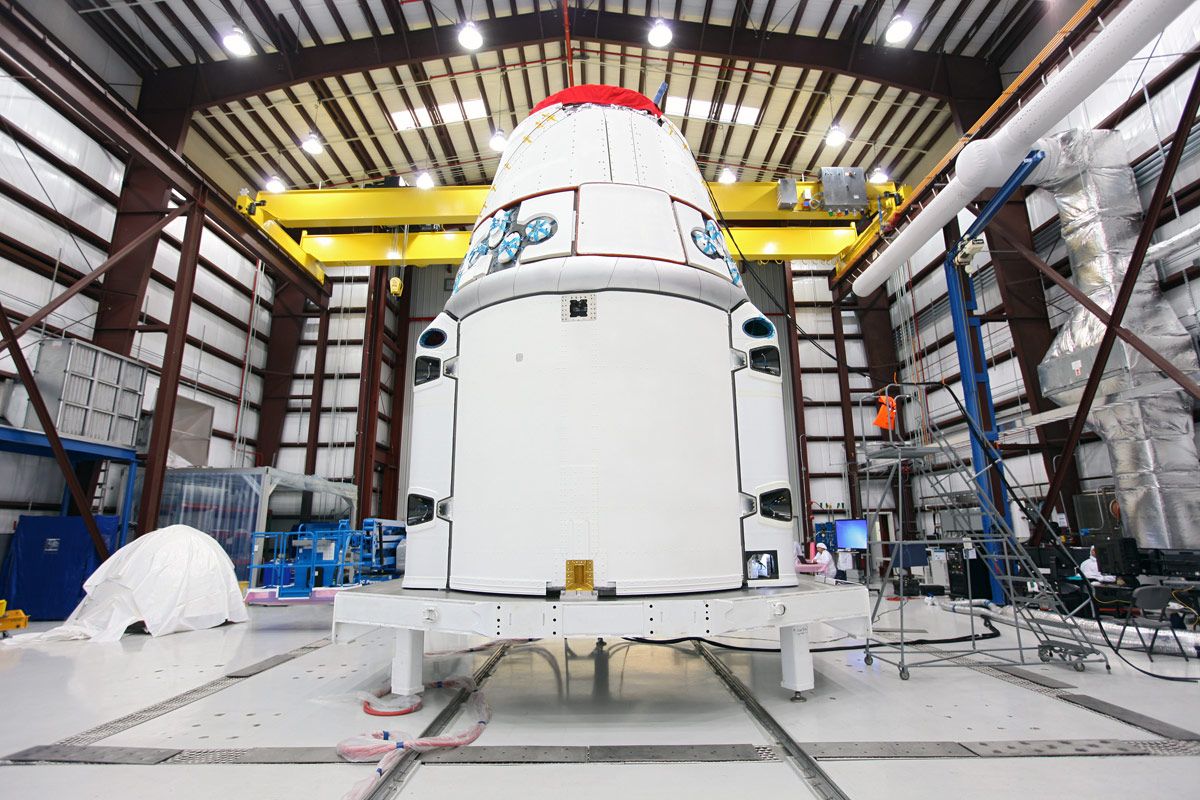
A private rocket has flexed its muscles in a key pre-launch test, firing up in preparation for lofting the next commercial cargo mission toward the International Space Station this Friday (March 1).
SpaceX's Falcon 9 rocket successfully executed a "static fire test" at around 1:30 p.m. EST (1830 GMT) today (Feb. 25), igniting its engines for a few seconds but staying earthbound at its launchpad at Florida's Cape Canaveral Air Force Station.
"During the static fire test today, SpaceX engineers ran through all countdown processes as though it were launch day," company officials said in a statement. "All nine engines fired at full power for two seconds, while the Falcon 9 was held down to the pad. SpaceX will now conduct a thorough review of all data and continue preparations for Friday's targeted launch."
The Falcon 9 is slated to blast SpaceX's robotic Dragon capsule toward the space station Friday on the company's second contracted cargo run for NASA. Dragon will carry about 1,200 pounds (544 kilograms) of supplies and scientific experiments to the orbiting lab, then return to Earth on March 25 with 2,300 pounds (1,043 kg) of experiment samples and equipment, NASA officials have said. [How SpaceX's Dragon Space Capsule Works (Infographic)]
California-based SpaceX holds a $1.6 billion deal with NASA to make 12 such resupply flights with Dragon and the Falcon 9. Dragon first reached the space station on a historic demonstration mission last May, and the company then flew its initial contracted cargo flight in October.
NASA also inked a $1.9 billion deal with Virginia-based Orbital Sciences Corp. for eight cargo flights using the company's Antares rocket and unmanned Cygnus capsule. Orbital plans to fly a demonstration mission to the station later this year and successfully test fired the first stage if the Antares rocket last week, officials have said.
The two contracts are part of a NASA effort to encourage American private spaceships to fill the cargo- and crew-carrying void left by the retirement of the space shuttle fleet in July 2011.
Sign up for the Live Science daily newsletter now
Get the world’s most fascinating discoveries delivered straight to your inbox.
The space agency hopes at least one commercial vehicle is able to carry astronauts to and from low-Earth orbit by 2017.
SpaceX is in the running to win a NASA crew contract with a manned version of Dragon. The other major contenders are Boeing, which is developing its own capsule called the CST-100, and Sierra Nevada Corp., which is building a space plane called Dream Chaser.
Until one or more of these manned spaceships is operational, NASA will rely on Russian Soyuz spacecraft to fly its astronauts, at a cost of about $60 million per seat.
This story was provided by SPACE.com, a sister site to Live Science. Follow SPACE.com senior writer Mike Wall on Twitter @michaeldwall or SPACE.com @Spacedotcom. We're also on Facebook and Google+.












